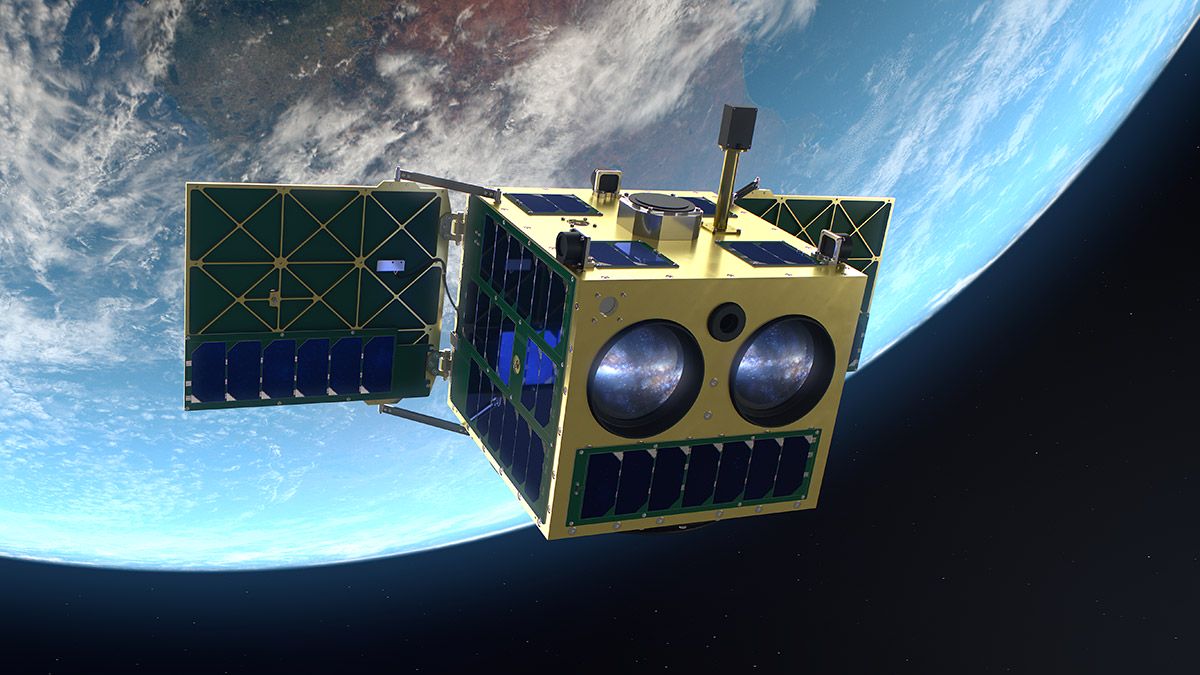Creotech Instrument S.A.’s flagship Hypersat project involving the development of an innovative microsatellite platform is gaining momentum. In November, the company finalized a contract with the National Center for Research and Development (NCBiR) worth PLN 20m, making it the largest project in the Polish private space industry to date. Project work will take 36 months and deliver an engineering model of the satellite platform that will pass all the required testing and be ready for operation in orbit.
In November 2017, Creotech Instruments S.A. signed a contract with the National Center for Research and Development to design a Polish satellite platform for future small space missions. Called Renaissance and worth PLN 20m, the project was awarded as part of the Fast Track 1.1.1 competition under the Smart Growth Operational Programme and will run for 36 months. After selecting the winning bidder in June 2017, the parties started ironing out the details of the contract. However, Creotech elected to initiate the project even before the deal was finalized. Renaissance will see the creation of a satellite platform called HyperSat.
Polish platform
“The initial months of the project involved fleshing out the platform’s technical parameters and requirements. Our ambition is for Hypersat to become a carrier for a number of space missions, including ones focused on observation and telecommunications. That is why it is so important to define the requirements for a whole range of instruments so early on in the project,” explained Marcin Stolarski, the originator of the project and a systems engineer in the HyperSat project at Creotech Instruments S.A. “In the upcoming stages, we will implement the requirements into the platform design.”
HyperSat will be a modular platform weighing from 10 to 60 kg and with a size ranging from 35x35x10 cm to 35x35x60 cm. It will come with all necessary onboard subsystems, such as the onboard computer, power supply and Earth communication system. The subsystems will be located in a mechanical structure with an additional payload compartment that can house such instruments as a telescope, RF transmitter or radar. This compartment will be available to future users of the platform. The “nervous system” of the platform will be the so-called HyperSat Data Network, i.e. a bus ensuring communication between the satellite’s modules.
“The SpaceVPX standard seemed like the obvious choice for the bus as it offers highly reliable communication between individual components. It has also seen extensive adoption on the global market,” said Marcin Stolarski.
Creotech also opted to make that platform backwards compatible with the CubeSat standard, which opens up possibilities to use a wide range of existing CubeSat-standard subsystems. Other major advantages offered by Hypersat include its scalability and focus on quick integration.
“Scalability allows for flexibility in adapting requirements and the platform’s size to desired instruments, which brings down the cost of space missions. In turn, focus on quick integration will allow satellites based on our solution to be built very quickly, a much-desired characteristic on the rapidly growing new satellite services market,” said Grzegorz Brona, PhD, President of the Management Board of Creotech Instruments S.A. “According to projections, over the next decade, as many as 6,000 micro-class satellites may be launched into the Earth’s orbit, and the value of this segment can potentially exceed USD 30bn.”
HyperSat will be the world’s first platform of its size based on the Open Hardware idea as the satellite’s documentation will be public. Creotech is betting on the idea that an open platform will attract smaller companies, universities and scientific institutions to the project. Earlier, the CubeSat platform relied on a similar strategy, which was one of the factors underlying its huge market success.
HyperSat was unveiled internationally on 23 November at the Open Source Cubesat Workshop 2017 in Darmstadt, a conference organized by the European Space Agency. The platform’s presentation was met with great interest from the international community of developers of free software and applications for small satellites.
“Depending on the configuration, the platform will carry a price of EUR 1 to 5m, several times less than competing solutions. The project provides for the possibility of delivering a ready-made platform configured to the client’s needs within six months of ordering, with the current market standard being 24 months,” emphasized Grzegorz Brona, PhD. “This record time is made possible through the standardization of modules and using a communication system based on SpaceVPX. In addition, we guarantee the full transfer of knowledge to the client. Because of all this, Hypersat has already attracted interest from around a dozen foreign entities for application in both one-off missions and as part of larger constellations.”

 Subscribe to receive latest news:
Subscribe to receive latest news: